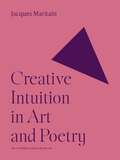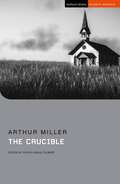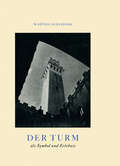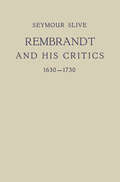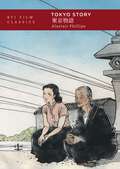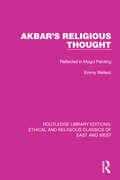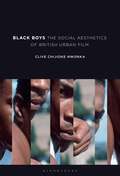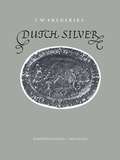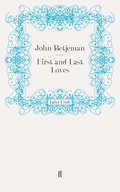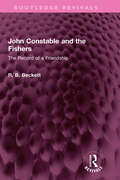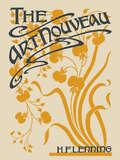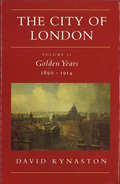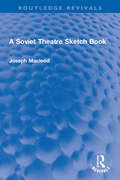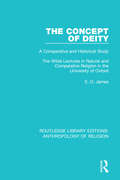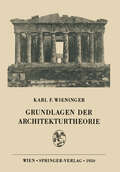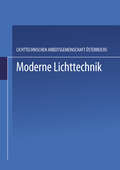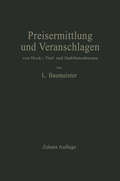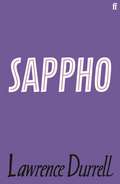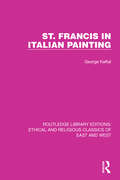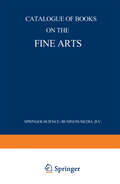- Table View
- List View
Creative Intuition in Art and Poetry (The A. W. Mellon Lectures in the Fine Arts #1)
by Jacques MaritainThe classic work on the sublime interplay between the arts and poeticsThis book explores the rich and complex relationship between art and poetry, shedding invaluable light on what makes each art form unique yet wholly interdependent. Jacques Maritain insists on the part played by the intellect as well as the imagination, showing how poetry has its source in the preconceptual activity of the rational mind. As Maritain argues, intellect is not merely logical and conceptual reason. Rather, it carries on an exceedingly more profound and obscure life, one that is revealed to us as we seek to penetrate the hidden recesses of poetic and artistic activity. Incisive and authoritative, this illuminating book is the product of a lifelong reflection on the meaning of artistic expression in all its varied forms.
The Crucible (Student Editions #24)
by Arthur MillerBecause it is my name! Because I cannot have another in my life! Because I lie and sign myself to lies! Because I am not worth the dust on the feet of them that hang! How may I live without my name? I have given you my soul; leave me my name!In a small tight-knit community, gossip and rumour spread like wildfire, inflaming personal grievances until no-one is safe from accusation and vengeance. The Crucible is Arthur Miller's classic dramatisation of the witch-hunt and trials that besieged the Puritan community of Salem in 1692. Seen as a chilling parallel to the McCarthyism and repressive culture of fear that gripped America in the 1950s, the play's timeless relevance and appeal remains as strong as when the play opened on Broadway in 1953.This new edition includes an introduction by Soyica Diggs Colbert, that explores the play's production history as well as the dramatic, thematic, and academic debates that surround it; a must-have resource for any student exploring The Crucible.
Der Turm: als Symbol und Erlebnis
by M. Révész-AlexanderIch habe mir in diesem Buch die Aufgabe gestellt, die Bedeutung, den Sinn und den Ausdrucksgehalt des Turmes zu erforschen. In langjähriger Beschäftigung mit diesem Problem bin ich zu einer Deutung gekommen, die mich immer mehr befriedigte, je mehr und je verschiedenere Türme ich sah und einer Analyse unterwarf. Es war demnach mein Ziel, diese Interpretation, die ausschliesslich für diese einzigartige architektonische Schöpfungen gilt, überzeugend und deutlich darzustellen. Dadurch hoffe ich die wesentlichsten, von Zeit und Stil unabhängigen Merkqlale des Turmes von allen Seiten beleuchtet zu haben. Es ergibt sich daraus von selbst, dass ich weder danach strebte, eine Entwicklungsgeschichte des Turmes zu geben, noch eine vollständige Ty pologie der Türme verschiedener Länder aufzustellen, sondern das Prinzipielle und Wesentliche, das in allen Türmen gemeinsam ist, zu finden und an treffenden Beispielen zu demonstrieren. Amsterdam, Juli 1953. Dr Magda Revcsz-Alexander. Inhaltsverzeichnis Einleitung . 1 Der Turm von Babel 3 Sinn und Funktion des Turmes. 13 Die zwei extremen Erscheinungsformen: der statische und der dynamische Turmtypus . 23 Turm und Gebäude 43 Der Turm im Gesamtbild diesseits und jenseits der Alpen. 59 Warum hat die griechische Baukunst keine Türme? . 73 Der Pharos von Alexandria . 83 Warum had die römische Baukunst keine Türme? 91 Der Turm in unserer Zeit. 103 Schlussbetrachtung 119 Summary . 125 Sachregister 133 Namenregister 135 Bildernachweis Ed. Alinari, Florenz: Abb. 15, 17, 25, 26, 27, 28, 31,33,34; Anderson, Rom: Abb. 10,32; Belgisch Verkeersbureau, Amsterdam: Abb. 21, 24; Bildarchiv, Marburg alL: Abb. 20, 35; Ed. Brogi: Abb.
Rembrandt and His Critics 1630–1730 (Utrechtse bijdragen tot de kunstgeschiedenis #2)
by Seymour SliveTokyo Story (BFI Film Classics)
by Alastair PhillipsOzu Yasujiro's moving family drama, Tokyo monogatari/Tokyo Story (1953), is universally acknowledged as one of the most significant Japanese films ever made, and regularly cited as one of the greatest films of all time in polls of leading critics and filmmakers around the world. Telling the story of an elderly couple who travel to Tokyo to visit their grown-up children, the film contrasts the behaviour of their children, who are too busy to pay their parents much attention, and their widowed daughter-in-law who treats them with hospitable kindness. In its complex portrait of human motivation and lively sense of social space, it offers a profound and poignant insight into the generational shifts of postwar Japan. Alastair Phillips combines a close analysis of the film and its key locations - the city of Tokyo, the town of Onomichi and the coastal resort of Atami - with a discussion of its representation of Japanese society at a time of great cultural change. Drawing upon Japanese and English language sources, he situates the film within various contemporary critical and industrial contexts and examines the multiple international dimensions of Tokyo Story's long after-life to understand its enormous contribution to global film culture.
Akbar's Religious Thought: Reflected in Mogul Painting (Ethical and Religious Classics of East and West #9)
by Emmy WelleszOriginally published in 1952, the first part of this book gives a portrait of Akbar (1542-1605), Emperor of India, not as a War Lord and Empire Builder, but as a man deeply absorbed in questions of the Spirit. It follows him in his quest after the various religions professed in India and the doctrines of the Christian faith. The text is illustrated by numerous reproductions of contemporary miniatures. Their style which, under Akbar’s inspiring patronage, resulted from the collaboration of Muslim and Hindu artists who became acquainted with European paintings, reflects the universality of the Emperor’s mind. The second part of the book is concerned with the rise and development of this style.
Akbar's Religious Thought: Reflected in Mogul Painting (Ethical and Religious Classics of East and West #9)
by Emmy WelleszOriginally published in 1952, the first part of this book gives a portrait of Akbar (1542-1605), Emperor of India, not as a War Lord and Empire Builder, but as a man deeply absorbed in questions of the Spirit. It follows him in his quest after the various religions professed in India and the doctrines of the Christian faith. The text is illustrated by numerous reproductions of contemporary miniatures. Their style which, under Akbar’s inspiring patronage, resulted from the collaboration of Muslim and Hindu artists who became acquainted with European paintings, reflects the universality of the Emperor’s mind. The second part of the book is concerned with the rise and development of this style.
Black Boys: The Social Aesthetics of British Urban Film
by Clive Chijioke NwonkaIn Black Boys: The Aesthetics of British Urban Film, Nwonka offers the first dedicated analysis of Black British urban cinematic and televisual representation as a textual encounter with Blackness, masculinity and urban identity where the generic construction of images and narratives of Black urbanity is informed by the (un)knowable allure of Black urban Otherness. Foregrounding the textual Black urban identity as a historical formation, and drawing on a range of theoretical frameworks that allow for an examination of the emergence and continued social, cultural and industrial investment in the fictitious and non-fictitious images of Black urban identities and geographies, Nwonka convenes a dialogue between the disciplines of Film and Television Studies, Philosophy, Cultural Studies, Black Studies, Sociology and Criminology. Here, Nwonka ventures beyond what can be understood as the perennial and simplistic optic of racial stereotype in order to advance a more expansive reading of the Black British urban text as the outcome of a complex conjunctural interaction between social phenomena, cultural policy, political discourse and the continuously shifting politics of Black representation. Through the analysis of a number of texts and political and socio-cultural moments, Nwonka identifies Black urban textuality as conditioned by a bidirectionality rooted in historical and contemporary questions of race, racism and anti-Blackness but equally attentive to the social dynamics that render the screen as a site of Black recognition, authorship and authenticity. Analysed in the context of realism, social and political allegory, urban multiculture, Black corporeality and racial, gender and sexual politics, in integrating such considerations into the fabrics of a thematic reading of the Black urban text and through the writings of Stuart Hall, Paul Gilroy, Judith Butler and Derrida, Black Boys presents a critical rethinking of the contextual and aesthetic factors in the visual constructions of Black urban identity.
Dutch Silver: Embossed Plaquettes Tazze and Dishes from the Renaissance Until the End of the Eighteenth Century
by J.W. FrederiksProsperity generally brings with it a desire for luxury, which finds its expression in man's endeavour to surround himself with objects of beauty. Artists of all kinds are always being attracted to the centres of wealth, which thus develop into centres of art. We observe this through the whole of history; in antiquity, in the Middle Ages and, above all, during the Renaissance in Italy, where the many States and cities vied with each other in fostering cultural life, where palaces, castles and churches were built and decorated by the greatest artists as a result of the liberality of the art-loving princes, whose example was followed by the nobility and the rich merchants. North of the Alps, it was mainly France that came into the foreground in this field. The Duc de Berry was one of the greatest patrons of art of all times. His brother Philip, Duke of Burgundy, and his successors made of their court, which frequently resided in the Southern Netherlands, a centre of culture. Under the Hapsburgs the tradition was con tinued. The Northern Netherlands, which also gradually came to be part of the Burgundian realm (Holland since 1433), at first lagged behind as far as cultural life was concerned, but little by little they caught up with their southern contemporaries. An important factor in the development of the Netherlands was their geographical po sition, which predestined them to become a great commercial centre.
First and Last Loves
by Sir John Betjeman'Oh prams on concrete balconies, what will your children see? Oh white and antiseptic life in school and home and clinic, oh soul-destroying job with handy pension, oh loveless life of safe monotony, why were you created?'First and Last Loves is a collection of Betjeman's essays on architecture, first published to coincide with an exhibition at the Soane Museum, and a worthwhile volume in its own right. Introduced with a lively tirade against mediocrity entitled 'Love is Dead', Betjeman discusses a range of topics including conservation battles, modern architecture and his passion for railways.
John Constable and the Fishers: The Record of a Friendship (Routledge Revivals)
by R B BeckettFirst published in 1952, John Constable and the Fishers is based on original letters which have never been published in full before. These have been woven into a connected narrative dealing with the friendship which existed between Constable and various members of the Fisher family, more particularly the Bishop of Salisbury (a personal friend of George III who entrusted him with the education of Princess Charlotte as heiress to the throne) and his nephew the Archdeacon of Berkshire. The Archdeacon’s letters give a picture of life in a cathedral closed and country vicarages, reminiscent of Trollope’s Barchester and Thomas Hardy’s Wessex. In return Constable confides his ideals and ambitions; and as Mr. Grigson suggests in his introduction, the encouragement he received from the Fishers may have had a decisive effect on the future of landscape art. The letters are fully annotated and are illustrated with connected works done by Constable. This book will of interest to students of history, art and literature.
John Constable and the Fishers: The Record of a Friendship (Routledge Revivals)
by R B BeckettFirst published in 1952, John Constable and the Fishers is based on original letters which have never been published in full before. These have been woven into a connected narrative dealing with the friendship which existed between Constable and various members of the Fisher family, more particularly the Bishop of Salisbury (a personal friend of George III who entrusted him with the education of Princess Charlotte as heiress to the throne) and his nephew the Archdeacon of Berkshire. The Archdeacon’s letters give a picture of life in a cathedral closed and country vicarages, reminiscent of Trollope’s Barchester and Thomas Hardy’s Wessex. In return Constable confides his ideals and ambitions; and as Mr. Grigson suggests in his introduction, the encouragement he received from the Fishers may have had a decisive effect on the future of landscape art. The letters are fully annotated and are illustrated with connected works done by Constable. This book will of interest to students of history, art and literature.
The City Of London Volume 2: Golden Years 1890-1914
by David KynastonBetween 1890 and 1914 the City of London was all dominant as Britain's legendary gold standard reigned supreme across the globe. Golden Years anatomises an elite at the height of its powers. Combining brilliant scholarship with high entertainment, and drawing on an unparalleled range of original sources, David Kynaston brings the city triumphant into the mainstream of British and world history.
A Soviet Theatre Sketch Book (Routledge Revivals)
by Joseph MacleodFirst Published in 1951, A Soviet Theatre Sketch Book presents Joseph Macleod’s take on Russian Theatre in a semi-fictional way to show the effect of the productions upon different audiences. By using his pen as an artist uses his pencil, he gives, for the first time, an account of theatre audiences as composed of individual human beings and is able to paint the scenes vividly without neglecting the technical methods of the Soviet stage. By supple use of the sketch- book form, theatres, theatre-schools, actors, and actresses including some no longer appearing are painted into an all-over view of Russian and Ukrainian post-war life. In this book the author writes less immediately about the Soviet Union and does not depend on topicality or stop press news. Joseph Macleod and his wife visited the Soviet Union as the guests of the Russian and Ukrainian Societies for Cultural Relations with Foreign Countries. This book will be of interest to scholars and researchers of theatre, history of theatre, and performance studies.
A Soviet Theatre Sketch Book (Routledge Revivals)
by Joseph MacleodFirst Published in 1951, A Soviet Theatre Sketch Book presents Joseph Macleod’s take on Russian Theatre in a semi-fictional way to show the effect of the productions upon different audiences. By using his pen as an artist uses his pencil, he gives, for the first time, an account of theatre audiences as composed of individual human beings and is able to paint the scenes vividly without neglecting the technical methods of the Soviet stage. By supple use of the sketch- book form, theatres, theatre-schools, actors, and actresses including some no longer appearing are painted into an all-over view of Russian and Ukrainian post-war life. In this book the author writes less immediately about the Soviet Union and does not depend on topicality or stop press news. Joseph Macleod and his wife visited the Soviet Union as the guests of the Russian and Ukrainian Societies for Cultural Relations with Foreign Countries. This book will be of interest to scholars and researchers of theatre, history of theatre, and performance studies.
The Concept of Deity: A Comparative and Historical Study. The Wilde Lectures in Natural and Comparative Religion in the University of Oxford (Routledge Library Editions: Anthropology of Religion #2)
by E.O. JamesFor good or ill, most, if not all, of the great institutions which have formed the framework of society have had their roots in the idea of Deity as a beneficent providential order of transcendental reality. In being handed down through countless generations the beliefs, concepts and customs have assumed a great variety of new outward forms in the process of transmission and development. To determine their true meaning and function as a cohesive force and as an expression of ultimate reality, the comparative and historical methods can be employed with considerable advantage. This book, first published in 1950, provides a valuable comparative study of religion.
The Concept of Deity: A Comparative and Historical Study. The Wilde Lectures in Natural and Comparative Religion in the University of Oxford (Routledge Library Editions: Anthropology of Religion #2)
by E.O. JamesFor good or ill, most, if not all, of the great institutions which have formed the framework of society have had their roots in the idea of Deity as a beneficent providential order of transcendental reality. In being handed down through countless generations the beliefs, concepts and customs have assumed a great variety of new outward forms in the process of transmission and development. To determine their true meaning and function as a cohesive force and as an expression of ultimate reality, the comparative and historical methods can be employed with considerable advantage. This book, first published in 1950, provides a valuable comparative study of religion.
Preisermittlung und Veranschlagen von Hoch-, Tief- und Stahlbetonbauten: Ein Hilfs- und Nachschlagebuch zum Veranschlagen von Erd-, Straßen-, Wasser- und Brücken-, Stahlbeton-, Maurer- und Zimmerarbeiten
by Ludwig BaumeisterSappho
by Lawrence Durrell'A magician.' The Times'A philosophical play of ideas, exploring loss, war, and incest in Ancient Greece, by the celebrated author of The Alexandria Quartet.Lesbos, Ancient Greece. Lawrence Durrell's intricate play follows vivid characters who represent different attitudes towards the role of the individual in the world, exploring how their lofty ideals are transformed when they become victims of unforeseeable real-life circumstances. Eloquent, tragic, poetic, Durrell's parable is a powerful study of idealism in an imperfect universe, drawing vibrant parallels between the classical world and our modern existence.
St. Francis in Italian Painting (Ethical and Religious Classics of East and West #2)
by George KaftalOriginally published in 1950, this book shows that the religious and ethical values that St. Francis was striving after are as essential today as they were in his time. The book presents St. Francis as a complex personality and corrects the rather mawkish interpretation of certain legends. It deals with the environment and development of the saint’s personality and chapters from his biographies by Thomas of Celano or St. Bonaventure and many black and white plates illustrating them which are reproductions of paintings by Italian masters from the XIIIth to the late XVth century.
St. Francis in Italian Painting (Ethical and Religious Classics of East and West #2)
by George KaftalOriginally published in 1950, this book shows that the religious and ethical values that St. Francis was striving after are as essential today as they were in his time. The book presents St. Francis as a complex personality and corrects the rather mawkish interpretation of certain legends. It deals with the environment and development of the saint’s personality and chapters from his biographies by Thomas of Celano or St. Bonaventure and many black and white plates illustrating them which are reproductions of paintings by Italian masters from the XIIIth to the late XVth century.
